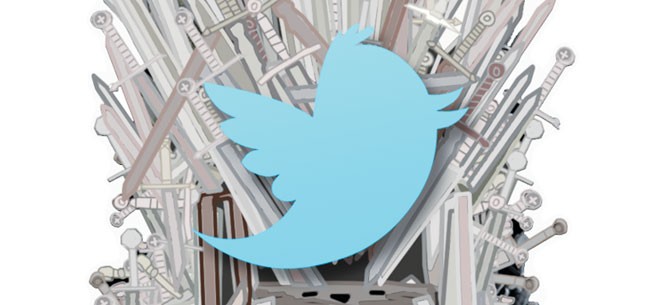

Remember the time when Humsafar aired and Twitter timelines turned to the love saga of Khirad and Asher every Friday, between 8 and 9pm? How can one forget? You could avoid watching the play on TV but once logged onto Twitter, the Humsafar invasion was inescapable. Followers of the show took to social media and let out their wit creating hilarious comics and memes; they obsessed over the characters, revelled in the romance and burst out in angst over the miseries that encountered their heroine. The same happened with Zindagi Gulzar Hai and more recently, Bashar Momin. These serials became a phenomenon on Pakistani social media.
So what is it that connects television with social media and what effect does Twitter, in particular, have in amplifying the success of a TV program?
It’s safe to say that most people reading this article have a Facebook account, which they regularly use. Media Bistro reports that 71% of all internet users use Facebook. Some readers may also have a Twitter handle, or Instagram or a blog. With its growing popularity, social media/networking has become much more than a way to stay connected with friends, family or the news. It is used as an advertising tool, a medium for business, and as a platform to get your voice out there.
Once logged on, one finds themselves reading articles shared by fellow networkers – things they wouldn’t read otherwise – or getting curious about the story behind a trending hashtag, or just generally re-sharing content that interests them. The point is that, in one way or another, social media sparks curiosity.
This aspect of the online world has opened new doors for television programming. Viewers love to share how they feel about their favourite/least favourite TV shows online, pairing their opinions with relevant hashtags. Brands send out sponsored "promoted" tweets about their products, as do networks about their TV shows. If they pay for it, there must be something they’re getting out of it – more viewers.
These days it is impossible to scroll down one’s Twitter timelines without gathering a reference to a popular TV show – currently Orange Is The New Black and Game of Thrones. In 2013, social media was overflowing with talk of Breaking Bad. Twitter and Facebook being the top two social media websites are responsible for spreading most of the viewer-generated hype about TV shows and the phenomenon is getting stronger by the tweet.
It is rather common for fans to tweet about a show while watching it – which is the same kind of behaviour exhibited by sports fans while sporting events are happening. Real-time online discussion over what’s on TV has become a thing. Does it make a difference to the viewership?
Surveyors at Nielsen Media Research – an American firm that measures media audiences – have been studying TV show viewers and using a TV rating system in America since the 1950s. A 2013 research from Nielsen shows that Twitter alone can increase a TV programme’s viewership. Simply put, the constant bombardment of information about a programme will lead many non-followers to start watching the particular TV show.
Case in point: recently HBO’s Game of Thrones broke The Sopranos’ record as the most popular show in the network’s history. GoT’s fourth season surpassed 18.4 million viewers. That’s 0.2 million more than The Sopranos, which aired over a decade ago. While the quality and addictiveness of both shows is indisputable, it cannot be ignored that during the airing of The Sopranos, the phenomenon of social media (mainly Facebook and Twitter) hadn’t blown up like it has now. Since March 1, 2014, over 1.69 million Game of Thrones-related tweets have been posted, reports Forbes.
E! Online reported that the most tweeted-about TV shows last season were Breaking Bad, The Walking Dead, Pretty Little Liars, The Bachelor, and Game of Thrones. Breaking Bad’s finale alone was viewed 9.1 million times and lead actor Bryan Cranston’s tweet about the finale was retweeted over 54,000 times, creating impressions on non-watchers even after the show was no longer airing.
The power of social media has pushed celebrities and TV show teams to create their social accounts and make official fan pages, which makes engagement with the average viewer easier. Pakistani actor Faysal Qureshi is often seen tweeting about his drama serial Bashar Momin and his morning show. Stars Instagram photos of themselves (which are sometimes show teasers) and tweet about their work. With social media, stars can reach their fans directly, a much more effective way of promoting their shows than paid advertisements.
These days, while the FIFA fever is on, the internet is flooded with event-related tweets by people who are tuned into the games. Twitter has in fact created a parallel bar for FIFA followers, which appears on phone screens and gives updates 24/7. You no longer have to Google scores or game updates when you have the largest, fastest and most entertaining newsroom of the online world at your disposal. The Ghana vs USA match topped with 3.1 million tweets, which were seen by a unique audience of 11 million. Beyond the millions of footie tweets, Pretty Little Liars is one show that bagged a unique audience of 3.9 million people! Forbes says that "the show isn’t just a social media darling – it is also a ratings juggernaut."
We can conclude that without efficient social media representation, it is hard for a show to make an impact outside of its airing time on television. The fact that entertainment news websites and even printed newspapers now often feature fan/celeb tweets in their reports on shows, is witness to how legitimate Twitter’s impact has become. Love it or hate it, Twitter has become a brilliant modern social TV revolution tool that amps your entertainment experience up a notch, or several thousand!